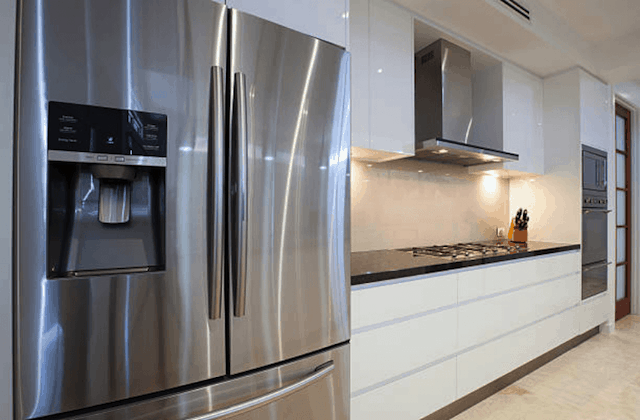
Fort Smith Appliance Repair is experienced in refrigerator repair in Fort Smith, including services to fix broken ice makers. Learn about common ice maker failures below:
Ice makers are possibly one of the greatest inventions of all time. An ice maker is a little luxury many people certainly take for granted. Refrigerator ice makers are relatively simple machines that do not feature a lot of complicated components that will go wrong with them.
Like with any appliance repair, there are a few basic things that should be reviewed before thinking the worst. And, remember, if needed, you can replace the ice maker without replacing an entire fridge, dependent on the model. First, let’s review a few of the reasons for an ice maker failure.
If your ice maker is making ice but it isn’t ejecting it it is usually means there is a mechanical failure versus an electrical problem. This happens when shifting things around in the freezer unit, you could shift the control switch up or down. A lot of the time the ice maker will get jammed with something else, even another chunk of ice. So, look to see if there is anything blocking this from operating correctly.
Before starting the process of clearing out the freezer, ensure the ice maker is on. This can be done by moving the metal control arm in the down position. From time to time, moving food around in the freezer can put the control into the off position. If the control arm is free, then there might be something stuck inside the ice maker or it’s not getting a good connection.
Check the Control Arm
If the control is down and there’s ice but it’s not ejecting it, there might be an electrical or mechanical issue. This will require a bit more troubleshooting. Ready to proceed? First, we must check the electrical connection. This can be unplugged from the rear of the freezer when shifting or moving the freezer contents.
To check this, unplug the refrigerator and move it out from the wall. Turn off the water supply valve. Locate the connection on the back of the inside of the freezer unit. Essentially this is what connects the ice maker into the freezer. Ensure that it is actually plugged in the right way.
Then, remove all of the ice that’s inside of the ice maker itself. This can be done by pouring in a bit of water to help to get any ice that’s in there out.
Once done, restore power to the fridge and then turn on the ice maker. It may take the solenoid component a couple of seconds to react and fill the mold. After the mold is full, wait 4-5 hours or so to see if you’ve cleared the problem.
Check for Frozen Lines
Other ice maker problems that could cause your ice maker to not make ice are frozen lines. The water lines might be clogged with frost. This is an easy problem to fix.
First, unplug the fridge and find the water shut off valve. Turn the water off and get a hair dryer to warm the water line or let the fridge sit shut off for a few hours and wait until the line is thawed.
Some models that feature a water filter that can freeze or ice over. In these situations, locating the filter is the first step. Then repeat what was done for the frozen water line.
When your ice maker isn’t making big enough pieces of ice, there’s an issue with the ice maker settings. To adjust the settings, take the top part of the cover off and locate a basic dial that has plus and a minus symbols. For this process, you may need a flat head screwdriver.
ADDITIONAL REFRIGERATOR RESOURCES
- Refrigerator Noisy
- Refrigerator Water Dispenser Not Working
- Refrigerator Not Cooling
- How Does a Refrigerator Work?
